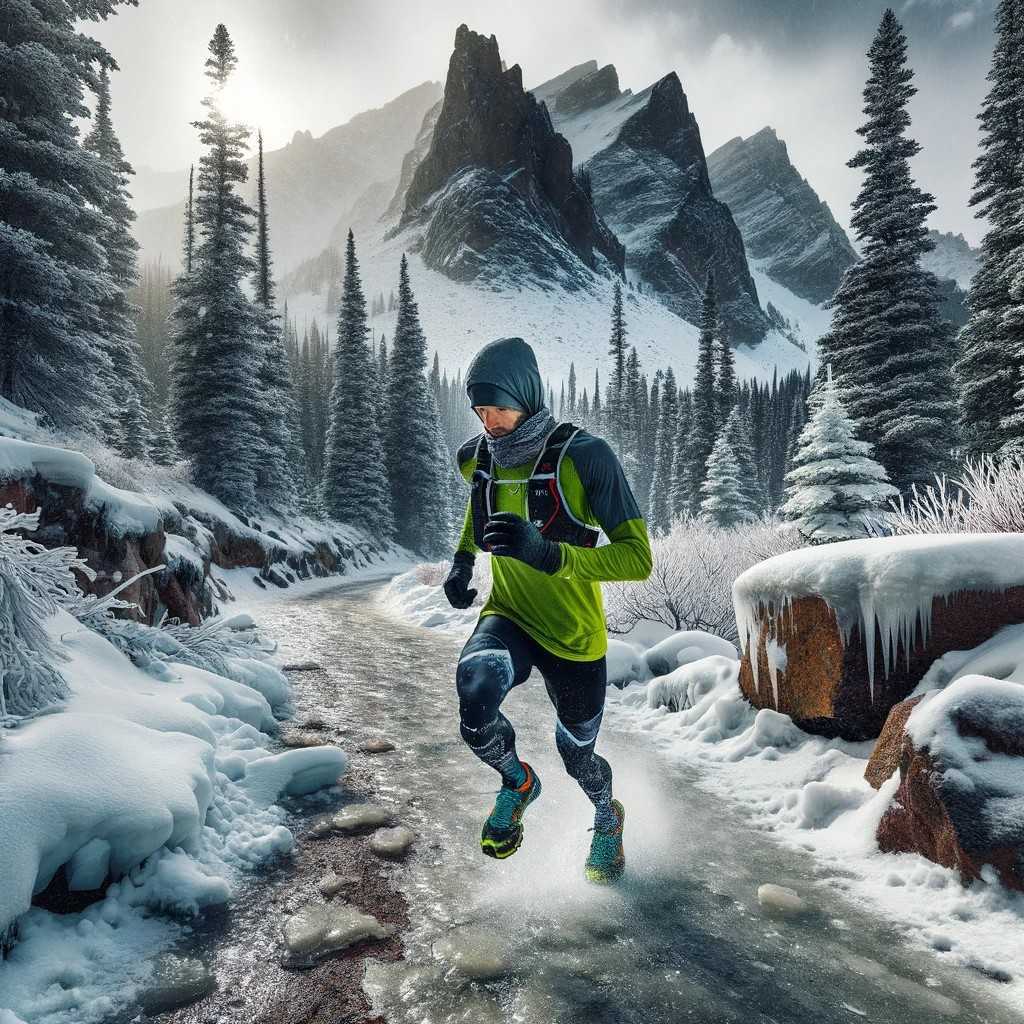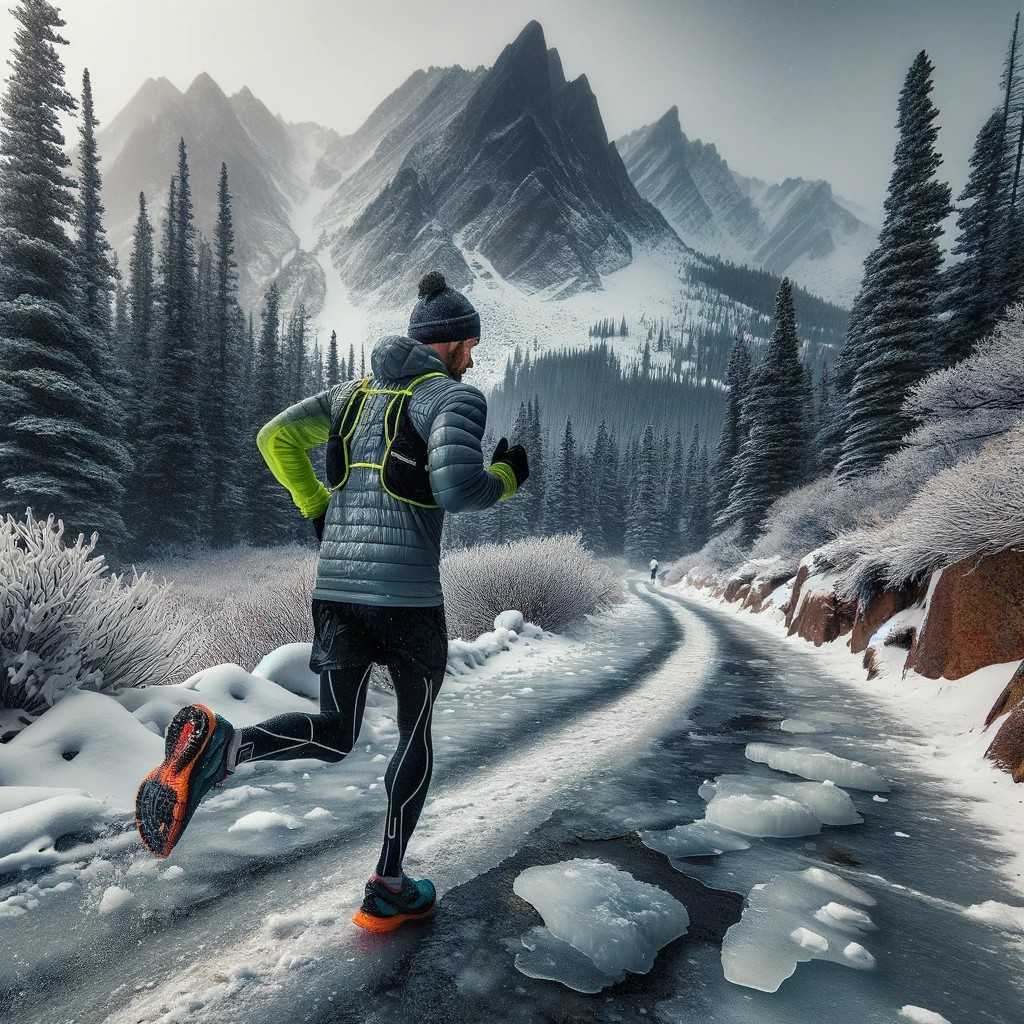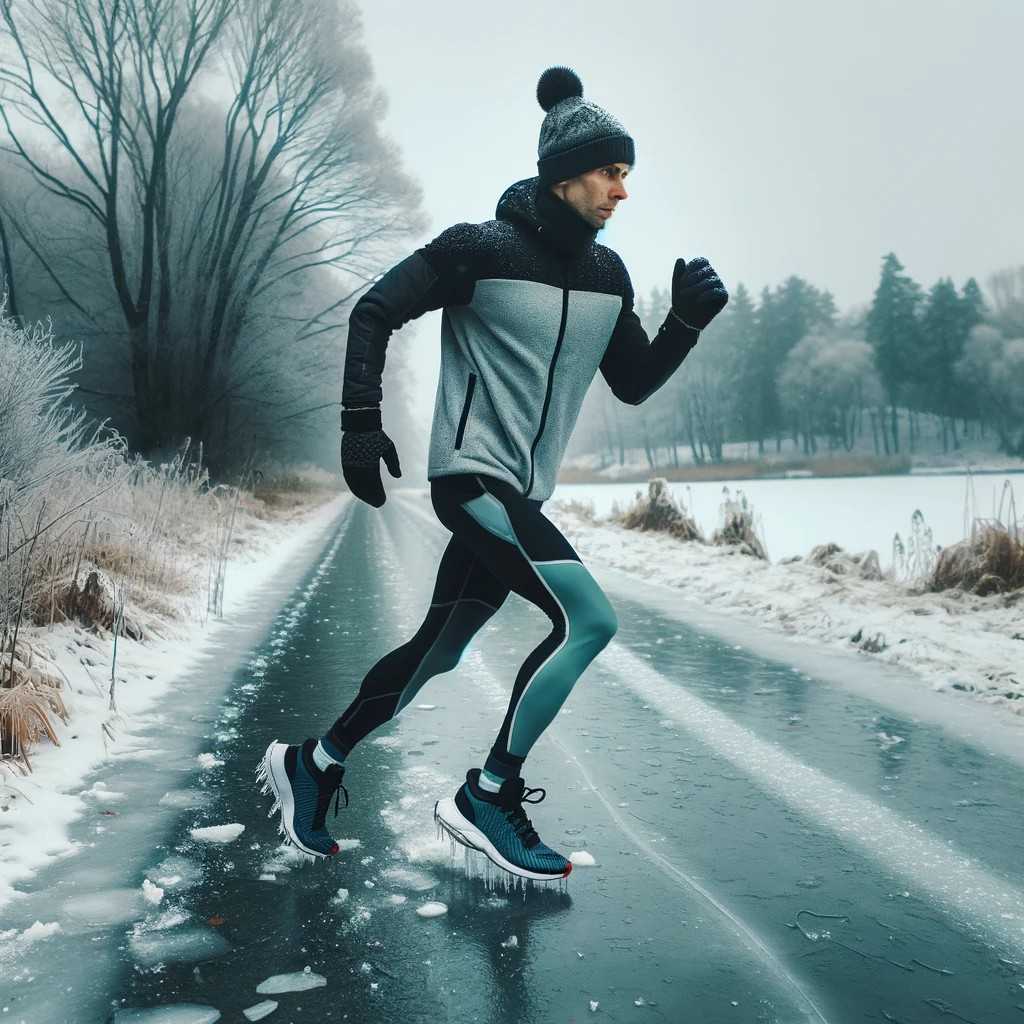
Navigating the Frost: Your Guide to Cold Weather Running
As winter blankets the Fort Collins landscape with snow and ice, runners face a unique set of challenges and rewards. While the allure of cozy blankets and hot cocoa beckons, there’s something special about braving the elements and hitting the pavement in the crisp winter air. In this guide, we’ll dive into the essentials of cold-weather running, offering practical tips and insights to help you stay safe, warm, and motivated during your icy adventures.
Embrace the Chill: Mentally Preparing for Winter Runs
Before lacing up your shoes and stepping out into the cold, it’s essential to prepare mentally for the journey ahead. Instead of dreading the chill, embrace it as part of the adventure. Visualize yourself conquering icy paths and relish the invigorating sensation of breathing in the frosty air. Shift your mindset from viewing the cold as a barrier to seeing it as an opportunity to challenge yourself and experience the season in a whole new light.
Gear Up: Dressing the Part for Cold Weather Running
Choosing the right gear is crucial for staying comfortable and safe during winter runs. Layering is key to regulating body temperature and managing moisture effectively. Start with a moisture-wicking base layer to keep sweat at bay, add an insulating layer for warmth, and top it off with a windproof and water-resistant outer shell to shield against the elements.
Invest in high-quality thermal running gear crafted specifically for winter conditions. Look for materials like merino wool and synthetic blends that offer warmth without bulk and retain heat even when wet. Don’t forget to outfit yourself with gloves, wool socks, and a snug hat or headband to keep extremities cozy and protected from the biting cold.
Safety First: Tips for Tackling Icy Terrain
Running on icy surfaces requires extra caution and mindfulness to avoid slips and falls. Prioritize safety above all else and adjust your pace and route accordingly. Opt for well-lit and well-traveled paths to minimize the risk of hidden hazards, and choose flat surfaces whenever possible to maintain stability.
Focus on maintaining a shorter stride and a slower cadence to enhance balance and control on slippery terrain. Keep your weight centered over your feet and engage your core muscles for added stability. Approach each step with care, testing the surface for traction before committing to your stride.
Stay vigilant and keep an eye out for black ice, a particularly sneaky hazard that can blend seamlessly with the pavement. Exercise caution on bridges, shaded areas, and high-traffic zones where ice is more likely to form, and be prepared to adapt your footing accordingly.
Hydration and Nutrition: Fueling Your Winter Runs
Despite the cold temperatures, staying hydrated is just as important during winter runs as it is in warmer weather. The dry winter air can increase the risk of dehydration, so be sure to drink water before, during, and after your run to replenish lost fluids.
Fuel your body with energy-rich snacks before heading out, opting for easily digestible carbohydrates to sustain endurance and keep your internal furnace burning. Pack portable snacks like energy gels, dried fruits, and nuts to refuel on the fly and keep your energy levels up throughout your run.
Post-Run Recovery: Restoring Warmth and Comfort
After completing your winter run, prioritize post-run recovery to soothe tired muscles and restore warmth to your body. Shed wet clothing promptly to prevent heat loss and swap them out for dry, cozy layers to promote circulation and ward off chills.
Indulge in a hot shower or soak in a warm bath to relax muscles and alleviate stiffness, adding Epsom salts or essential oils for an extra touch of luxury. Treat yourself to a nourishing post-run meal rich in protein and carbohydrates to replenish energy stores and support muscle repair and recovery.
Cold weather running presents a unique blend of challenges and rewards for runners brave enough to embrace the frost. By cultivating the right mindset, gearing up with the appropriate attire, prioritizing safety, and tending to hydration and nutrition, you can conquer the winter elements and experience the exhilaration of running in a winter wonderland. Embrace the season’s beauty, challenge yourself to push beyond your limits, and discover the magic that awaits on icy trails and snow-covered paths. With preparation and determination, winter running can become a source of strength, resilience, and joy, keeping you connected to the beauty and wonder of the season.

Ice, Ice, Baby: How Running on Frost Can Strain Your Hip Abductor Muscles

Running on ice poses unique challenges, especially for the hip abductor muscles, which play a crucial role in stabilizing the pelvis and maintaining balance. Strengthening these muscles can help prevent painful injuries. Incorporate exercises like side leg lifts, clamshells, lateral band walks, and hip abduction machine workouts into your routine. These exercises target the hip abductors, enhancing their strength and stability. By investing time in strengthening these muscles, runners can better withstand the challenges of icy terrain and reduce the risk of pulling a hip abductor while running
Icy Trails You Might Want to Avoid:
Pineridge Natural Area:
Many of the shaded trails on the west side (Timber Trail) in Pineridge Natural Area can retain ice and become slippery during winter months. The gravel parts are usually good in the winter, but don’t be surprised if the trails are CLOSED by the city due to mud.
Coyote Ridge Natural Area:
Some sections of the trails at Coyote Ridge can accumulate ice, especially in shaded areas and near water crossings.
Greyrock Trail:
- This trail, located in the Poudre Canyon area, can become icy due to its elevation and shaded sections.
Arthur’s Rock Trail:
- Found in Lory State Park, Arthur’s Rock Trail can have icy patches, particularly in shaded areas and during early mornings.
Blue Sky Trail:
- While offering stunning views, portions of the Blue Sky Trail, especially those in shaded areas, can be icy during winter.
Hewlett Gulch Trail:
- This trail, north of Fort Collins, can have icy conditions, especially in shaded areas and near creek crossings.
It’s always a good idea to check local trail conditions and weather forecasts before heading out, and consider using traction devices like microspikes if you plan to hike in icy conditions.
Safer Trails:
Horsetooth Mountain Open Space:
- Horsetooth Rock Trail
- Horsetooth Falls Trail
- Spring Creek Trail (connects to Horsetooth Mountain Open Space)
Bobcat Ridge Natural Area:
- Valley Loop Trail
- Ginny Trail
- Powerline Trail
Maxwell Natural Area:
- Reservoir Ridge Trail (portion faces south)
- Sunset Trail
Devil’s Backbone Open Space:
- Several trails offer south-facing sections
- Devil’s Backbone Trail
- Hidden Valley Trail
Cathy Fromme Prairie Natural Area:
- Many trails offer south-facing sections
- Redtail Grove Loop
- Fossil Creek Trail
With Snow and Ice Comes MUD
- Choose appropriate footwear with aggressive treads or consider traction devices like crampons for icy trails.
- Adapt running technique by shortening strides and maintaining a lower center of gravity to improve stability.
- Embrace a slower pace to enhance reaction time and navigate tricky sections safely.
- Incorporate cross-training activities like strength training and flexibility exercises to complement trail running and prevent injuries.
COTREX, Colorado’s sponsored app, stands as a trailblazer in outdoor recreation exploration. This user-friendly application, officially known as the Colorado Trail Explorer, offers a comprehensive guide to the state’s vast network of trails. With its intuitive interface, COTREX provides real-time information on trail conditions, difficulty levels, and points of interest. Users can seamlessly plan their outdoor adventures, discover new routes, and access detailed maps, ensuring a safe and enjoyable experience. From hiking and biking to trail running and beyond, COTREX empowers outdoor enthusiasts to navigate Colorado’s breathtaking landscapes with confidence and convenience, making it an indispensable tool for those seeking to explore the state’s diverse and captivating terrain.

